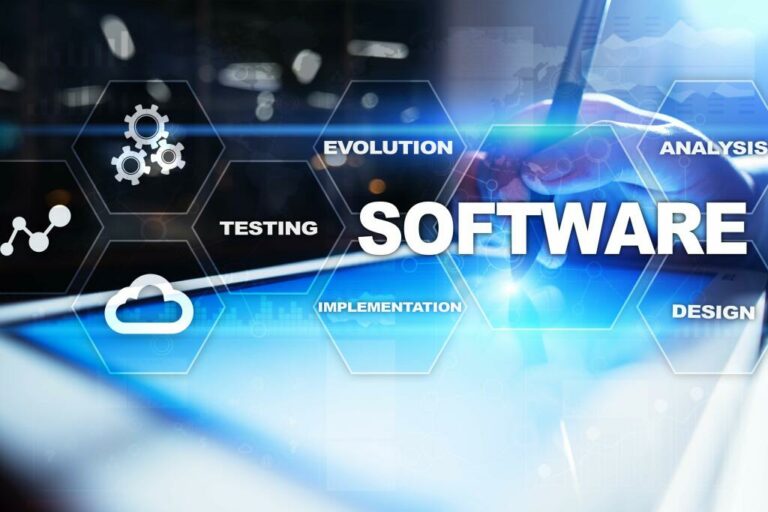These are two ways to generate requirements and test cases for your project. When all people related to the supply chain, including consumers, can recognize the status of the product and objects and information has been linked, tracing forward/back can be done easily. 1Homogeneous materials or artifacts that are used to test and evaluate the measurement performance and fitness for purpose of measuring systems (VIM §3.2) or measurement https://www.globalcloudteam.com/ procedures (VIM §2.6). The values of a nominal property are the names of the subsets in that partition. The values of nominal properties can be compared only by establishing equality or difference. For example,a chemical element either is or is not an alkali metal; a specific tiger has the same defining traits as other tigers, and these traits differentiate all tigers from animals of other species in the genus Panthera.

This is tedious, and many companies find themselves lost in information when testing new software products. Using traceability in an RTM document is the perfect way to prevent your team from being disorganized. The same as with SRMs, Question 5.4.4, the purchase and use of an NTRM does not automatically make the customer’s measurement results traceable to reference standards developed and maintained by NIST. However, NTRMs can be used to make a claim of traceability to NIST in the same manner as SRMs, with reference to the certified values and uncertainties on an NTRM Certificate of Analysis.
Tool support for model-driven traceability
Is the individual or organization that supplies a measurement result for use, whose metrological traceability is being asserted. The following examples illustrate the types of documents that accompany reference materials currently available for sale by the Office of Reference Materials. These documents also confirm that the necessary procedures have been carried out to ensure the validity and traceability of the results that they report, as applicable [9] [12] [18] [17].

Source and Target represent the directions in which transformations are executed to create the links. Vertical and horizontal links are both supported, depending on whether Source and Target belong to different versions of the same model or to different models. At first glance, this would appear to introduce a high degree of complexity, but that is not the case. Source and target metamodels define the relationship between concepts and need to be modelled only once. In the same way, model transformations are only defined once, unless the metamodel changes. Bidirectional traceability incorporates elements of both forward and backward traceability.
Systems Engineering practice in automotive industry
This can be used during the development process to prioritize the requirement, determining how valuable the requirement is to a specific user. It can also be used after the deployment to see why certain unused features found during user studies were required in the first place. In March, 2015, the CIPM decided (Decision CIPM/104-26) that delta value isotope ratio measurements that cannot presently be made traceable to the SI should be made traceable to materials recognized as International Standards. Brand et al. [38] provide a list horizontal traceability of certified reference materials that should be used to identify accepted references for delta value isotope ratio traceability statements. Also, establishing traceability for mass standards with masses much smaller than 1 kg required a chain of multiple calibrations, whose uncertainty increased in proportion to the number of mass comparisons involved. The new SI makes realizations of the unit of mass and of convenient sub-multiples of it readily accessible in the laboratory and on the factory floor, via the Kibble balance [31].

These tools are error-prone when you have hundreds of requirements and multiple users working on a project. You may use specialized traceability tools for effective control of your projects. Calibration laboratories and testing facilities may be accredited by the National Voluntary Laboratory Accreditation Program (NVLAP), which is administered by NIST. Leaman and Hackett [36] describe the basic procedures and general accreditation requirements of NVLAP. A participating laboratory may voluntarily take steps to improve or assess its measurement process.
Why Is Requirements Traceability Important?
An RTM can also be thought of as a process of documenting the connection and relationships between the initial requirements of the project and the final product or service produced. In transaction processing software, traceability implies use of a unique piece of data (e.g., order date/time or a serialized sequence number) which can be traced through the entire software flow of all relevant application programs. Messages and files at any point in the system can then be audited for correctness and completeness, using the traceability key to find the particular transaction. In food processing (meat processing, fresh produce processing), the term traceability refers to the recording through means of barcodes or RFID tags & other tracking media, all movement of product and steps within the production process.
This is the goal for your projects; you need to be able to evaluate both forward and backward — identify problems, and then identify why those problems occurred, and when. For example, you begin in the research phase and work your way through your RTM, from tests to status to failures/problems. The more complex your project, the more likely it is that you’ll encounter a considerable number of failures. That isn’t a bad thing, but it means that you should consider giving yourself room to describe your intended outcomes and potential errors. Project status goes hand-in-hand with test cases and requirements by allowing teams to implement traceability. This could mean developing a test case wherein an automated program interacts with your software as a user would, to see if your project is performing successfully.
Systems and software development
NIST does not approve, recommend, or endorse any product or proprietary material. For information and guidance on evaluating and expressing measurement uncertainty, refer to NIST Technical Notes 1297 [23] and 1900 [24]. Are specialty gas CRMs produced as single units in collaboration with an industrial or government agency partner. RGMs are certified using the same protocols used for batch-certified NIST gas SRMs.
- Briand, Labiche & Yuea (2009) focus on changes between two versions of a UML model (vertical traces only) and analyze the impact of those changes using formally defined impact analysis rules (written in Object Constraint Language).
- This article concludes with Section 7 where the findings presented in this article are discussed and our future research in the area of traceability in Systems Engineering is presented.
- Extended definition 1) in particular seems to be a fair attempt at avoiding the recursion while still providing a non-trivial definition.
- In logistics, traceability refers to the capability for tracing goods along the distribution chain on a batch number or series number basis.
It does, however, offer services for the component measurement quantities (force, length, etc.) that are needed to derive torque, according to the well-accepted definition of torque. By performing the steps necessary to achieve traceability to NIST of the individual component measurement results when making a particular measurement of torque, it is possible to claim traceability of the corresponding measurement result to NIST. No, laboratory accreditation, whether conducted by NIST/NVLAP or any other recognized accreditation body, is a finding of a laboratory’s competence and capability to provide technically sound and appropriate measurement services within their scope of accreditation. Embedded in the process is an evaluation of the lab’s ability to achieve and maintain traceability for the accredited services. The certificate of each Standard Reference Material specifies the conditions under which NIST stands behind its measurement results after the SRM has left NIST. The customer must have an appropriate internal measurement assurance program in place to assure the traceability of measurements of the same materials, or of measurements made using those materials as calibrants [34].
ModelTracer: User-friendly Traceability for the Development of Mechatronic Products
In order to develop a good product, you’ll need to use both types of traceability to your advantage. The best way to ensure that every project requirement is linked with a test case is to match requirement identification numbers to test case IDs. For an even more thorough list of requirements, the team may compile potential use cases for the project. Project-management.com content and product recommendations are editorially independent. It tracks the requirement “forward ” by examining the output of the deliverables and “backward ” by looking at the business requirement that was specified for a particular feature of the product. The RTM is also used to verify that all requirements are met and to identify changes to the scope when they occur.

For more details on the process of systematic evidence generation, the reader is referred to Gutiérrez, Escalona & Mejías (2011). At least one TestUIStep is generated from each UIStep and at least one TestStep is generated from each Step. In this case, as the loop was not considered, only one element was generated for each UIStep and for each Step. In the generation process, a scenario, represented as a simple activity diagram, shows the steps that a user should execute in order to partially validate a part of the activity diagram represented in Fig. In the previous scenarios, decisions and values were predefined by the transformation that generates each test. Thus, although the decision element is retained for the sake of readability, only one path is given for each test.
Reference method for analyzing material flow, information flow and information loss in food supply chains
For example, the Mohs hardness of a mineral [29, Chapter 2], or the strength of a hurricane according to the Saffir-Simpson Hurricane Wind Scale. NIST declares it to be in the national interest that NIST should maintain an impartial position with respect to any commercial product. Advertising the findings on a single instrument, device, or artifact could be misinterpreted as an indication of performance of other instruments, devices, or artifacts of identical or similar type.